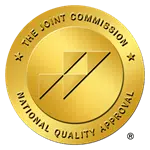Drug Abuse in the US
In 2024, the United States continues to face significant challenges related to drug abuse, with various substances impacting different demographics across the nation. Alcohol is the most commonly used drug, followed by tobacco and marijuana.
Prescription drug misuse has been notably on the rise, with an increasing prevalence that experts consider an epidemic. This trend highlights the pressing need for concerted efforts from healthcare providers, patients, and policymakers to address and mitigate the risks associated with prescription drug abuse.
The National Institute on Drug Abuse (NIDA) provides a comprehensive overview of the addiction public health crisis, reporting that in 2020, 40.3 million people in the U.S. had a Substance Use Disorder (SUD), yet only 6.5% received treatment [1] . This alarming statistic reflects the extensive scope of drug abuse in the country and the critical need for accessible and effective treatment options.
Moreover, drug addiction statistics reveal that overdose deaths are projected to rise by 14%, reaching an estimated 102,000 fatalities annually nationwide. This stark increase underscores the devastating impact of drug addiction on individuals, families, and communities across the U.S.[4]
State-wise, the prevalence of drug use varies, with states like Colorado and the District of Columbia reporting higher rates of illicit drug and marijuana use compared to the national average. This variability indicates the need for targeted interventions and policies that address the specific drug abuse challenges of each state.
Overall, these statistics underscore the urgency of addressing drug abuse in the U.S., emphasizing the need for comprehensive strategies that encompass prevention, treatment, and support for those affected by this pervasive public health issue.
The Substance Abuse and Mental Health Services Administration (SAMHSA) reported on the status of the long-standing drug abuse crisis in the U.S.that In 2022 [2] [3] :
- 1 in 4 Americans over the age of 12 admitted they used illicit drugs.
- This represents 70.3 million people
- 24.7 million (8.8%) admitted using illicit drugs
The National Safety Council reported in its preliminary 2022 estimates the following [3]:
- 100,105 people died from preventable drug overdoses
-A 61% increase from 62,172 in 2019
-A 797% increase since 1999 - Fentanyl accounted for 71,269 preventable deaths in 2022
-A 6% increase over 2021 - Yet other opioids accounted for 10,568 preventable deaths in 2022, a 13% decrease from 2021
Most Abused Drugs in the U.S.
In 2021, alcohol was the most popular drug in the U.S., with nearly half of Americans ages 12 and older saying they used it. Tobacco is next with 17% reporting use.
Marijuana was the most commonly used illicit drug in the United States, with 52.5 million people aged 12 or older having used it according to the most recent SAMHSA report [3]. Opioid misuse also remains a significant concern, with 9.2 million people in the same age group misusing opioids within the same year.
Cocaine continues to be a widely abused substance, ranking as the second-most commonly used illicit drug. Methamphetamine use is also significant, with around 774,000 Americans regularly consuming it. The misuse of prescription drugs is another major issue, contributing to a high number of overdose fatalities, particularly with opioids.
The trends and statistics indicate a complex and evolving challenge, with various substances affecting different demographics across the country. Addressing this requires a multifaceted approach, including prevention, treatment, and policy interventions.
Here is a current summary of drug abuse in the U.S.:
- Alcohol is the most popular drug in the U.S., with nearly half of Americans ages 12 and older saying they used it. Nearly 22% admitted they engaged in binge drinking in the past month at the time of the survey. [3]
- More than 1 in 5 Americans consumed tobacco in some form in the last month studied — with nearly 17% smoking cigarettes.
- 61.9 million (22%) admitted using marijuana [3]
- 10.2 million (3.6%), or 1 in 30 people, admitted to using central nervous system stimulants, including:
-5.3 million (1.9%) used cocaine
-4.3 million (1.5%) misused prescription stimulants
-2.7 million (1.0%) used methamphetamine - 8.9 million misused opioids
- 8.5 million misused hallucinogens
- 4.8 million misused prescription tranquilizers or sedatives
- 991,000 misused fentanyl

Social Implications
Drug abuse has profound social implications that ripple through communities, affecting not just the individuals who use drugs but also their families, friends, and society at large. The social fabric of communities can be significantly altered by the widespread prevalence of drug abuse, leading to a cascade of consequences that touch various aspects of life.
Prevalence of Substance Use Disorder
Overall, 46.3 million individuals met the criteria for having a substance use disorder, including alcohol and drug use disorders, with the highest prevalence among young adults aged 18 to 25 [3].
Overdose deaths are a stark indicator of the drug abuse problem, with significant variations across states. For instance, Kentucky has an overdose death rate significantly above the national average, while states like Georgia and Idaho have lower rates (NCDAS).
Mental Health Issues
Mental Health America, in its 2023 report, stated that 5% of adults had a substance use disorder in the past year. Of these, 93.5% did not receive treatment. They stated that “this near absence of any form of treatment for individuals with substance use disorder must be addressed, especially in light of the rise in overdose deaths during the COVID-19 pandemic. In 2020, there were 93,331 drug overdose deaths in the United States, a nearly 30% increase over the number prior to the COVID-19 pandemic. [5]”
Family and Relationships
One of the most immediate social implications of drug abuse is its impact on families. Substance abuse can lead to strained relationships, financial instability, and neglect or abuse of family members. Children growing up in households with substance abuse are more likely to experience emotional and behavioral problems, which can perpetuate a cycle of addiction across generations. The instability and unpredictability in a household with drug abuse can lead to a lack of nurturing and consistent parenting, crucial for a child’s development.
Crime and Legal Issues
Drug abuse is closely linked to criminal activity, both directly and indirectly. The need to finance drug addiction drives some individuals into criminal behavior, including theft, burglary, and drug trafficking. Moreover, substance use can impair judgment and lead to violent behaviors, contributing to higher rates of assault, domestic violence, and other crimes. Legal issues related to drug possession and distribution can lead to incarceration, further straining the justice system and contributing to the cycle of crime and substance abuse.
Economic Costs
The economic implications of drug abuse are staggering, encompassing healthcare costs, lost productivity, and law enforcement expenses. Substance abuse can lead to higher utilization of healthcare services due to associated health problems, overdoses, and injuries from accidents or violence. The loss of productivity in the workforce due to substance abuse-related absenteeism or decreased performance also adds to the economic burden. Moreover, the costs associated with policing, the judicial system, and correctional facilities significantly impact public resources.
Public Health
Drug abuse poses significant public health challenges, including the spread of infectious diseases such as HIV/AIDS and hepatitis C through shared needles. Overdose deaths have become a public health crisis, with opioids being a major contributor. The need for effective drug treatment programs and harm reduction strategies is critical in addressing these public health issues.
Social Cohesion and Community Life
Substance abuse can erode the social cohesion of communities. It can contribute to social isolation, stigma, and the marginalization of individuals who use drugs. Community resources can be strained, and the general sense of safety and well-being in neighborhoods can deteriorate. Public spaces can become less safe due to drug-related activities, impacting the quality of life for all residents.
In summary, the social implications of drug abuse extend far beyond the individual, affecting the very structure and quality of community life. Addressing these challenges requires a comprehensive approach that includes prevention, treatment, support for affected families, and community-based strategies to reduce the demand for drugs and mitigate their impacts. It calls for a collaborative effort among healthcare providers, policymakers, law enforcement, and community organizations to foster environments that promote healthy choices and support recovery.
Drug Addiction By the Numbers: Latest Statistics
The SAMHSA study reported [3]:
- 48 million (17%) admitted to Substance Use Disorder (SUD). That is 1 in 6 people in the U.S. Of these:
-27.2 million (9.7%) reported a drug use disorder
-6.1 million (2.2%) reported an opioid use disorder
-29.5 million (10.5%) reported an alcohol use disorder - 1 in 12 adults reported having any mental illness and an SUD
According to a recent report by NIDA [1] , the following summarizes the stark reality:
- 40.3 million people had a Substance Use Disorder (SUD) in 2020
- In 2020, only 6.5 percent of people with SUD received treatment
- In 2021, about 107,000 people died of drug overdoses
- Black and American Indian/Alaska Native people had the highest rates of fatal overdose in 2021
Recovery Success Rate in the U.S.
- 30.1 million adults aged 18 or older perceived that they ever had a substance use problem [3]
- Of these, 21 million adults (71%), who perceived ever having a substance use problem considered themselves to be in recovery or to have recovered.
- 62.3 million adults aged 18 or older perceived that they ever had a mental health issue
- Of these, 40.8 million (65%) adults who perceived ever having a mental health issue considered themselves to be in recovery or to have recovered.
Help Is Available
If you or a loved one are seeking advice or treatment for drug misuse, abuse or addiction, reach out to The Encino Recovery & Detox Center. We have years of experience working with people suffering from substance abuse issues. Our admissions counselors are here to help.

Sources
[1] National Institute on Drug Abuse. NIDA IC Fact Sheet 2024.
[2] U.S. Department of Health and Human Services. 2023. HHS, SAMHSA Release 2022 National Survey on Drug Use and Health Data.
[3] Substance Abuse and Mental Health Services Administration (SAMHSA). 20223. Results from the 2022 National Survey on Drug Use and Health: A Companion Infographic.
[4] National Safety Council. Drug Overdoses.
[5] Reinert, M, Fritze, D. & Nguyen, T. (October 2022). “The State of Mental Health in America 2023”. Mental Health America, Alexandria VA


















